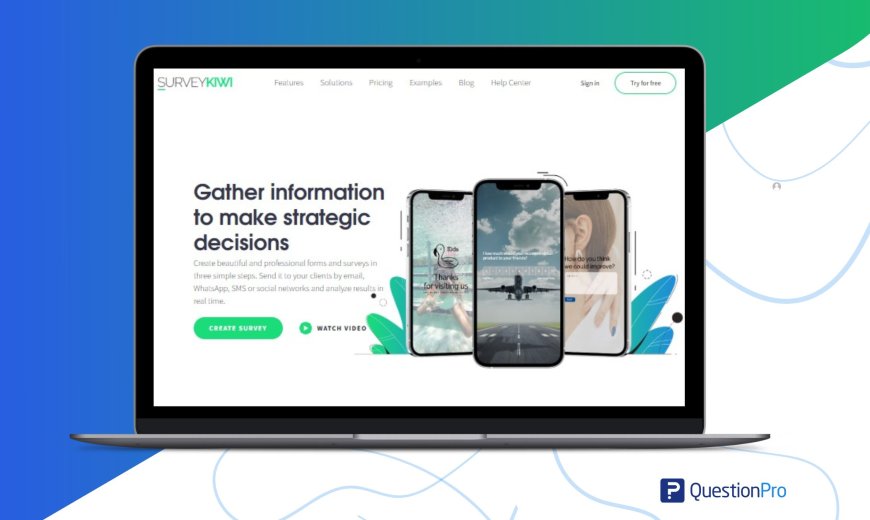Why Is NPS Important for Startups? A Beginner’s Guide to Analyzing Results
Learn why NPS is important for startups and how analyzing results early helps improve product, customer experience, and long-term growth.

Launching a startup often means juggling limited time, budget, and resources. One critical question that early-stage founders must ask themselves is this: why is NPS important? The Net Promoter Score (NPS) is more than just a numberits a compact yet powerful tool to measure how customers truly feel about your product or service. For startups, getting this feedback early can be the difference between refining your offering or missing the mark altogether.
Lets break down why NPS matters and how new founders can make the most of their results without needing an expensive analytics team.

Startup Constraints and Customer Insights
Startups often operate on tight budgets, meaning they can't always afford advanced customer research or massive data teams. But knowing what your customers thinkand why they think that wayis critical. That's where NPS comes in.
NPS works by asking one simple question: How likely are you to recommend our product or service to a friend or colleague? The responses provide a score between -100 and +100, but more importantly, they open the door to understanding loyalty and satisfaction.
For startups, this feedback helps you:
-
Identify gaps in your product or service before investing more resources
-
Spot brand advocates who can be valuable for word-of-mouth marketing
-
Understand the early patterns of customer sentiment, which can influence your roadmap
The Simplicity and Power of NPS
Simplicity is one of the greatest strengths of NPS. Unlike lengthy surveys that can lead to fatigue and low response rates, NPS takes seconds to complete. This boosts participation, especially among users who may not stick around long enough for complex feedback systems.
More importantly, the qualitative responses (comments provided along with the score) often contain golden insights. Founders can quickly identify recurring themes in complaints or praise and use this data to drive product iterations, customer support strategies, and marketing communication.
Some of the main benefits include:
-
Quick data collection with high response rates
-
Benchmarking performance across different customer segments
-
Early detection of user dissatisfaction before churn increases
What to Focus On When Analyzing Results
Once youve collected NPS feedback, the next step is analyzing results effectively. For beginners, it's easy to get stuck on the score alone, but the real value lies in the feedback behind the number.
Heres how to make sense of your NPS data:
-
Segment feedback: Break responses down by user type, plan tier, usage frequency, or geography to uncover more nuanced insights.
-
Identify trends: Look for patterns in complaints or compliments. Are users consistently frustrated by onboarding? Are they delighted with customer service?
-
Close the loop: Dont just collect feedbackrespond to it. Following up with detractors shows that youre listening and care about improvement.
-
Track changes over time: One NPS survey wont tell you much. Track scores monthly or quarterly to spot improvement or decline.
Mistakes Early-Stage Founders Make
When it comes to NPS, startups often fall into a few common traps:
-
Ignoring the qualitative data: Focusing only on the score means missing out on the real why behind customer opinions.
-
Using NPS too late: Waiting until you've scaled to implement NPS can lead to missed opportunities for early improvements.
-
Overreacting to one-time feedback: A few negative scores dont mean youre failing. Look for trends, not isolated incidents.
-
Not taking action: Gathering feedback is only valuable if it drives change. Make sure youre regularly implementing learnings from your NPS responses.
Free NPS Templates on SurveyKiwi
If youre not sure where to start, you dont need to build your NPS survey from scratch. Tools like SurveyKiwi offer free NPS templates tailored for startups. These templates help you save time and maintain consistency in how you gather and evaluate feedback.
With simple drag-and-drop functionality, customizable question fields, and automated response tracking, you can start measuring customer sentiment in minuteseven if youre new to feedback systems.
Final Thoughts
For startups, theres no room for wasted effort. Early customer feedback, especially when structured through a tool like NPS, can become a strategic asset. Knowing why NPS is important allows founders to focus their energy on what matters mostbuilding a product that people love.
And once you've started gathering responses, remember: analyzing results is just as critical as collecting them. Look beyond the numbers, act on feedback, and treat your early users like advisorstheyre your best guide to product-market fit.
Need a simple way to collect and interpret feedback? Try out a ready-to-use NPS template today and make informed decisions with confidence.






































